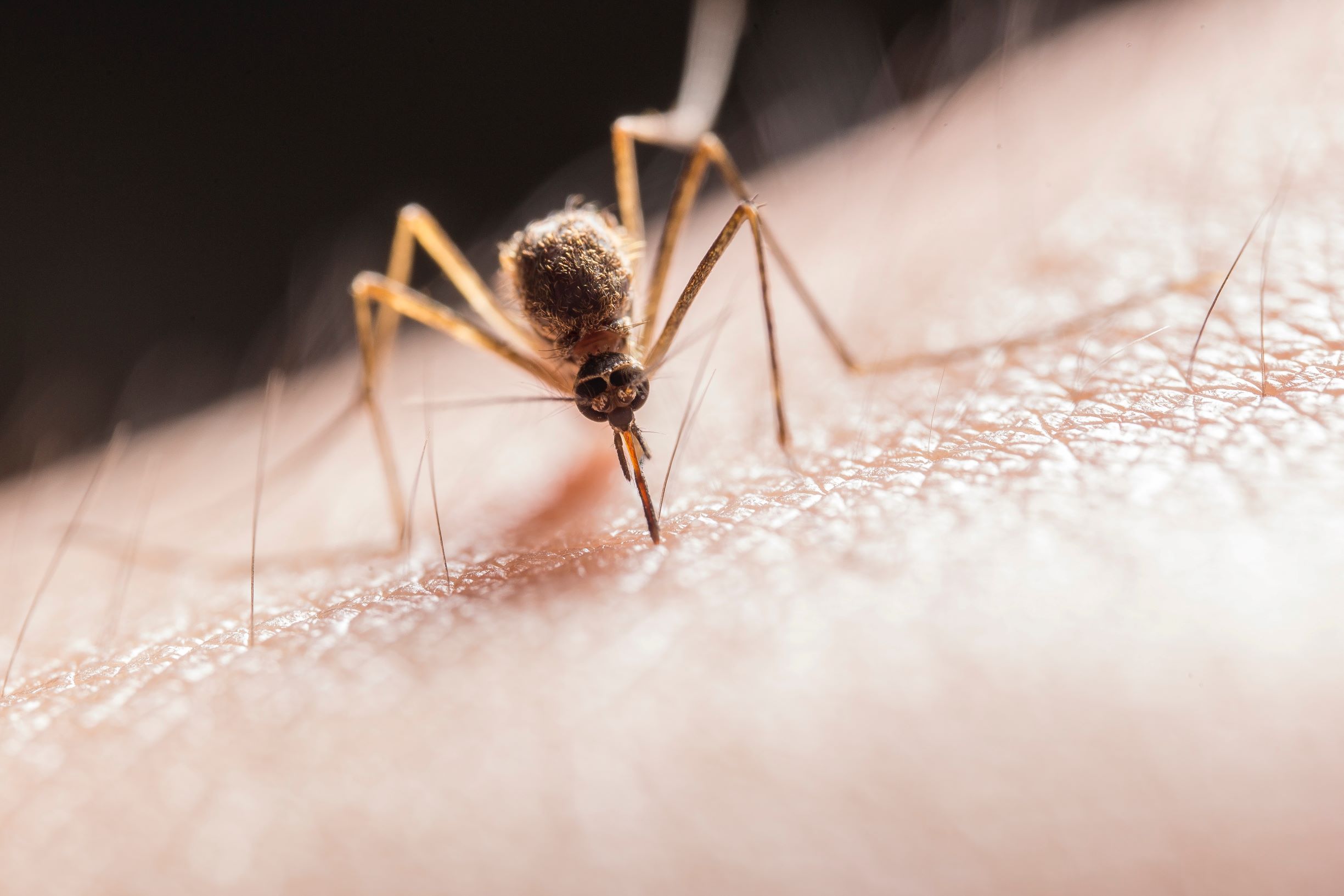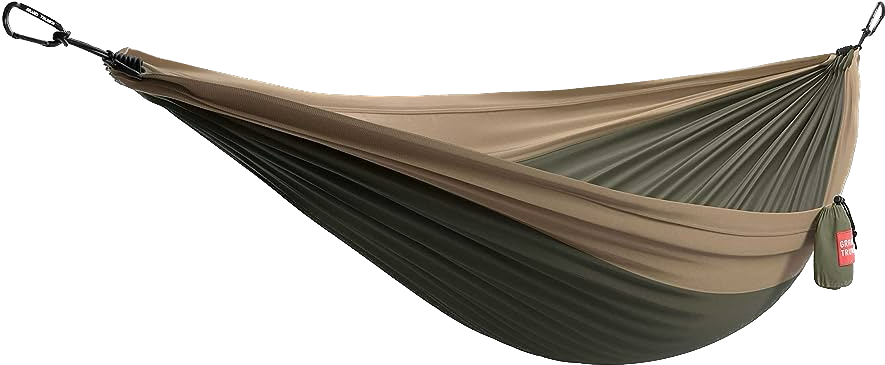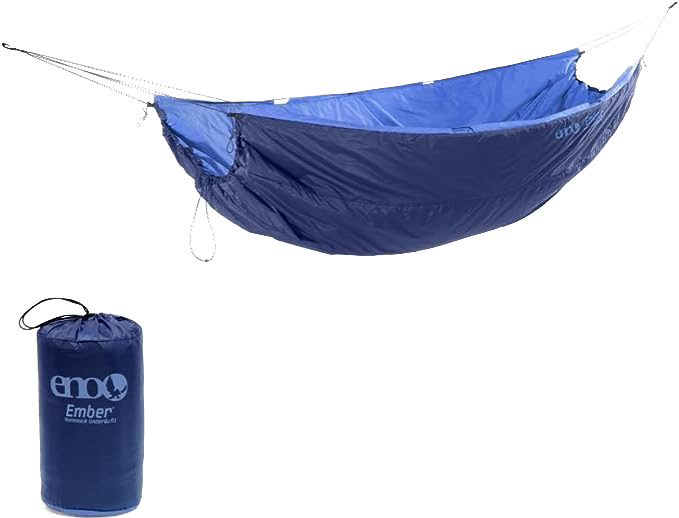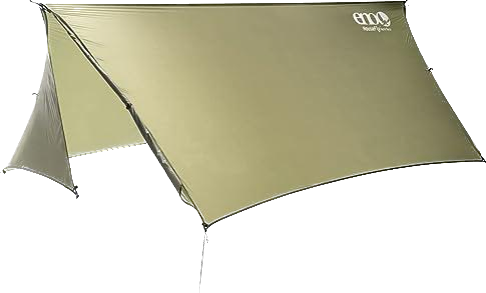Hammocks have become increasingly popular in recent years, and for a good reason. They’re easy to set up, comfortable to lounge in and offer a unique sleeping experience. Quite recently, hammocks have become a popular choice for outdoor enthusiasts who want to bring them along on their adventures.
However, one downside to hammocks is that they can be a bit more susceptible to bugs than tents. With a few simple tips, you can keep the bugs at bay and have a great time in your hammock.
In addition to tips, we’ve provided a high-level table to describe how to detour mosquitoes, ants, and spiders as these are the most common you’ll run into while hammocking.
| Pest | Prevention | Control |
| Mosquitoes | Apply insect repellent to skin and clothing | Use a fan to create a breeze and make it difficult for mosquitoes to fly near you |
| Choose a campsite that is not near standing water where mosquitoes breed | Wear long sleeves and pants to protect exposed skin | |
| Use mosquito netting to cover windows and doors in the campsite | Hang mosquito coils or use mosquito-repelling candles in the campsite | |
| Ants | Choose a campsite that is not near ant nests or trails | Use a bug netting enclosure to keep ants out of the hammock |
| Keep food and trash properly stored to avoid attracting ants | Use ant bait or traps to kill or remove ants from the campsite | |
| Use a hammock with built-in ant protection | Apply a natural ant repellent, such as essential oils, to the perimeter of the campsite | |
| Spiders | Choose a campsite that is not near spider webs | Use a bug netting enclosure to keep spiders out of the hammock |
| Keep the campsite clean and free of clutter to reduce hiding places for spiders | Use a natural spider repellent, such as essential oils, to deter spiders from entering the campsite |
Note: This article will mainly focus on bug protection while hammocking. If you’re looking for tips for all animals you might encounter, check out our article about how to stay safe from animals while hammock camping.
11 Tips to Keep Bugs Out of Your Hammock
- Choose the Right Location
When setting up your hammock, take a few minutes to scout out the area first. Avoid areas with lots of vegetation, standing water, or other potential sources of bugs. If you can, set up your hammock in an open area where there’s a breeze. This will help keep the bugs away.
- Cover Up
Wearing long pants and a long-sleeved shirt will help keep the bugs off your skin. If it’s particularly buggy out, you may even want to consider wearing a head net. Most people don’t find head nets to be very comfortable, but they’re incredibly effective at keeping bugs away from your face.
- Use a Mosquito Net
Are you tired of being constantly pestered by mosquitos and other bugs while hammocking? A mosquito net can be a simple and effective solution for keeping these pesky insects at bay. This will create a barrier between you and the bugs and will help keep them from getting inside your hammock.
Here are some tips for using a mosquito net while hammocking:
- Choose a mosquito net that is specifically designed for hammocks. These nets will typically have a shape and size that fits most hammocks, and may also come with special features like a built-in door or closure system.
- Set up the mosquito net before you get in the hammock. This will allow you to easily position the net so that it covers the entire hammock, including the ends where you will be entering and exiting.
- Secure the mosquito net to the hammock using the included attachment points or by tying it on with cords or straps. Make sure the net is taut and free of wrinkles, as this will help to keep bugs out.
- If the mosquito net has a door or closure system, make sure to use it whenever you get in or out of the hammock. This will help to prevent bugs from entering the net while you are inside.
- Regularly check the mosquito net for holes or tears, and repair or replace it as needed. A torn or damaged net will not be effective at keeping bugs out.
A good mosquito or bug net can mean the difference between a restful night’s sleep and a sleepless, itchy night or outing.
- Use Insect Repellent
In addition to using a mosquito net, using insect repellent can also help keep bugs away while hammocking. There are many different types of insect repellents available, including sprays, lotions, and wipes. Some repellents contain chemicals like DEET, which are effective at deterring mosquitos and other insects. Others use natural ingredients like essential oils to repel bugs.
When using insect repellent, it’s important to follow the directions on the product label and apply it according to the manufacturer’s recommendations. Some repellents may not be suitable for use on certain parts of the body or for people with certain health conditions.
It’s also a good idea to apply the repellent evenly over all exposed skin, paying particular attention to the ankles, wrists, and neck where bugs are most likely to bite. Be sure to reapply the repellent according to the manufacturer’s instructions, as it can wear off over time.
- Light a Citronella Candle

Citronella candles work by releasing a strong, pleasant aroma that helps to repel mosquitos and other insects. Citronella is a natural oil that is extracted from certain types of grasses and plants, and it has been used for centuries as a natural insect repellent.
When the candle is lit, the heat from the flame vaporizes the citronella oil, causing it to be released into the air as a fine mist. The mist fills the air around the candle, creating a protective barrier that helps to keep bugs away.
Citronella has a strong, pungent aroma that is unpleasant to many insects, including mosquitos. When insects come into contact with the aroma, it can disrupt their normal behavior and cause them to fly away or avoid the area altogether.
While citronella candles are not as effective at repelling insects as some chemical repellents, they can be a convenient and natural option for keeping bugs at bay while enjoying the outdoors.
- Hang up a Bug Zapper
Bug zappers use ultraviolet light to attract and kill bugs. They won’t keep all the bugs away, but they can help reduce the number of bugs in your immediate area.
- Set up a Fan
Using a fan can also be an effective way to keep bugs at bay while hammocking. Mosquitos and other insects are attracted to the carbon dioxide and body heat that we emit, and they are also attracted to the lactic acid, uric acid, and other compounds that are found in our sweat. By using a fan to create a breeze, you can help to keep these attractants away from your hammock, making it less appealing to bugs.
To use a fan while hammocking, simply set up the fan so that it is blowing towards the hammock. This can help to create a continuous, gentle breeze that will help to keep insects away. Some fans are designed specifically for outdoor use and may come with features like a clip or stand that allows you to attach the fan to your hammock or a nearby tree.
It’s important to keep in mind that a fan will not completely eliminate the presence of mosquitos or other bugs, but it can be an effective way to reduce their numbers and make your hammocking experience more comfortable. Using a fan in combination with other bug-repelling measures, like a mosquito net or insect repellent, can provide even greater protection.
- Don’t use Scented Products
While using scented products, such as perfumes or lotions, may make you feel more pleasant, they can attract bugs and make your hammocking experience more uncomfortable. Mosquitos and other insects are attracted to the chemicals and fragrances found in many scented products, and they may be more likely to bite if you are wearing or using these items.
To avoid attracting bugs while hammocking, it’s best to avoid using scented products, or at least use them sparingly. This includes perfumes, lotions, and other personal care products that may have strong fragrances.
If you do need to use a scented product, it’s a good idea to apply it to your hair or clothing rather than your skin. This can help to reduce the amount of fragrance that is released into the air and may make you less attractive to bugs.
- Empty your Trash Regularly
If you’re eating in your hammock, be sure to dispose of your trash properly. Emptying your trash regularly can also help to keep bugs away while hammocking. Mosquitos and other insects are attracted to the smells and odors that can be found in the garbage, and they may be more likely to visit areas where trash is present.
- Keep your Hammock Clean
Bugs are attracted to dirt and sweat, so it’s important to keep your hammock clean if you want to avoid them. Wash your hammock regularly, and be sure to wipe down any areas that have come into contact with your skin. Be sure to also use a clean, dry sleeping bag or other bedding when hammocking.
- Treat your Hammock and Gear with Permethrin
Permethrin is a synthetic version of a naturally occurring compound found in chrysanthemums. It’s incredibly effective at repelling and killing various pests, including mosquitoes, ants, and mites. You can buy pre-treated mosquito nets, clothing, and gear, or treat them yourself with a permethrin spray. A hammock treated with permethrin will remain effective for up to six weeks, even if it gets wet. And since permethrin is safe for humans and pets, it’s a great way to keep your hammock bug-free.
Just be sure to follow the manufacturer’s instructions for applying the permethrin. This may involve spraying or soaking the item in the solution or applying it with a sponge or cloth. Allow the permethrin to dry completely before using the treated items. This may take several hours or overnight, depending on the product and the humidity level.
In conclusion, wear long sleeves and pants, use a mosquito net or insect repellent, and keep your campsite clean and free of trash. By following these steps, you can help to reduce your risk of being bitten by bugs and insects while hammocking.
Why Are Bugs Attracted To Hammocks?
Bugs are attracted to hammocks for a variety of reasons. Mosquitos and other insects are attracted to the carbon dioxide and body heat that we emit, and they are also attracted to the lactic acid, uric acid, and other compounds that are found in our sweat. When we are relaxing in a hammock, we are often still and relatively stationary, making it easier for bugs to locate us and bite us.
In addition to our own bodily attractants, bugs may also be attracted to the smells and odors that can accumulate on our clothing and gear. If we have been sweating or eating in our hammock, or if we have not washed our bedding or clothing in a while, this can make our hammock more attractive to bugs.
Finally, bugs may be attracted to the environment in which we are hammocking. If we are camping or spending time in an area that is home to a large number of insects, it is more likely that we will encounter bugs while hammocking.
What Kind Of Bugs Are Attracted To Hammocks?
The type of bugs you’ll encounter in your hammock depends on the region and the time of year. In general, though, the most common insects you’ll encounter are mosquitoes, gnats, ants, and no-see-ums.
Mosquitoes are perhaps the most well-known of these pests. They’re attracted to the carbon dioxide we exhale and can smell us from up to 50 feet away! They also use their receptors and vision to locate and pick up on cues such as sweat, body heat, and skin odor to find a potential host. You can follow our 9 Tip Guide on how to Hammock without Mosquitoes.
Ants are another common pest in hammocks. They’re attracted to the food we bring into our hammocks and can quickly become a nuisance. If you have an ant problem in your hammock, chances are there’s a nearby nest that you need to address.
No-see-ums are tiny insects that are barely visible to the naked eye. They’re attracted to the carbon dioxide we exhale and can bite us without us even realizing it. No-see-ums can be particularly troublesome because their bites are often very itchy and can last for days.
Frequently Asked Questions
1. What is the best bug repellent for hammocks?
The best bug repellent for hammocks is one that contains DEET. DEET is a chemical compound that is effective at repelling mosquitoes, ticks, and other insects.
2. How do I apply bug repellent to my hammock?
To apply bug repellent to your hammock, ensure that the repellent is intended for use on fabric. There are many different types of bug repellents available, including chemical repellents like DEET and natural repellents like essential oils. When applied to clothing, gear, and other items, these repellents can help to keep bugs away and reduce the risk of bites.
To treat your hammock and gear with a bug repellent, follow these steps:
- Choose a bug repellent that is appropriate for use on clothing and gear. This may be a spray, solution, or lotion, and it may contain chemicals like DEET or natural ingredients like essential oils.
- Follow the manufacturer’s instructions for applying the repellent. This may involve spraying or soaking the item in the solution or applying it with a sponge or cloth.
- Allow the repellent to dry completely before using the treated items. This may take several hours or overnight, depending on the product and the humidity level.
- Reapply the repellent according to the manufacturer’s instructions. This may be necessary every few weeks or after the item has been laundered.
3. Do you really need a bug net for hammock camping?
This will vary depending on where you’re hammocking and the time of year it is. We recommend bringing a bug net and having it handy if there are lots of bugs in your area. If you plan on staying overnight, then yes, we recommend setting up a bug net for hammock camping. A bug net will keep mosquitoes and other insects from biting you while you sleep.
Read more: Do I Need a Mosquito Net Hammock? The Definitive Guide for 2023
4. How can I stop ants from getting into my hammock?
Ants can be a problem when hammock camping, but there are a few things you can do to keep them at bay. First, ensure that your food is properly stored in containers with tight-fitting lids. Second, keep your campsite clean and free of crumbs and other food debris. Finally, consider your gear and your hammock straps. Treating your hammock straps with bug repellent can be an effective way to prevent ants and other insects from getting into your hammock. Some ants are attracted to the odors and smell and by treating your straps you may detour them from climbing into your hammock
Wrapping It Up
In conclusion, following these 11 tips can help keep bugs out of your hammock and ensure a comfortable and enjoyable experience. Don’t let pesky insects ruin your relaxation time, take the necessary precautions to protect yourself and your hammock.
Remember to regularly check for and remove any visible bugs, use insect repellents and netting, and keep your hammock clean and dry. With a little bit of effort, you can enjoy a bug-free hammock experience all season long.



 Hello there, we're Vira Outdoors!
Hello there, we're Vira Outdoors!

